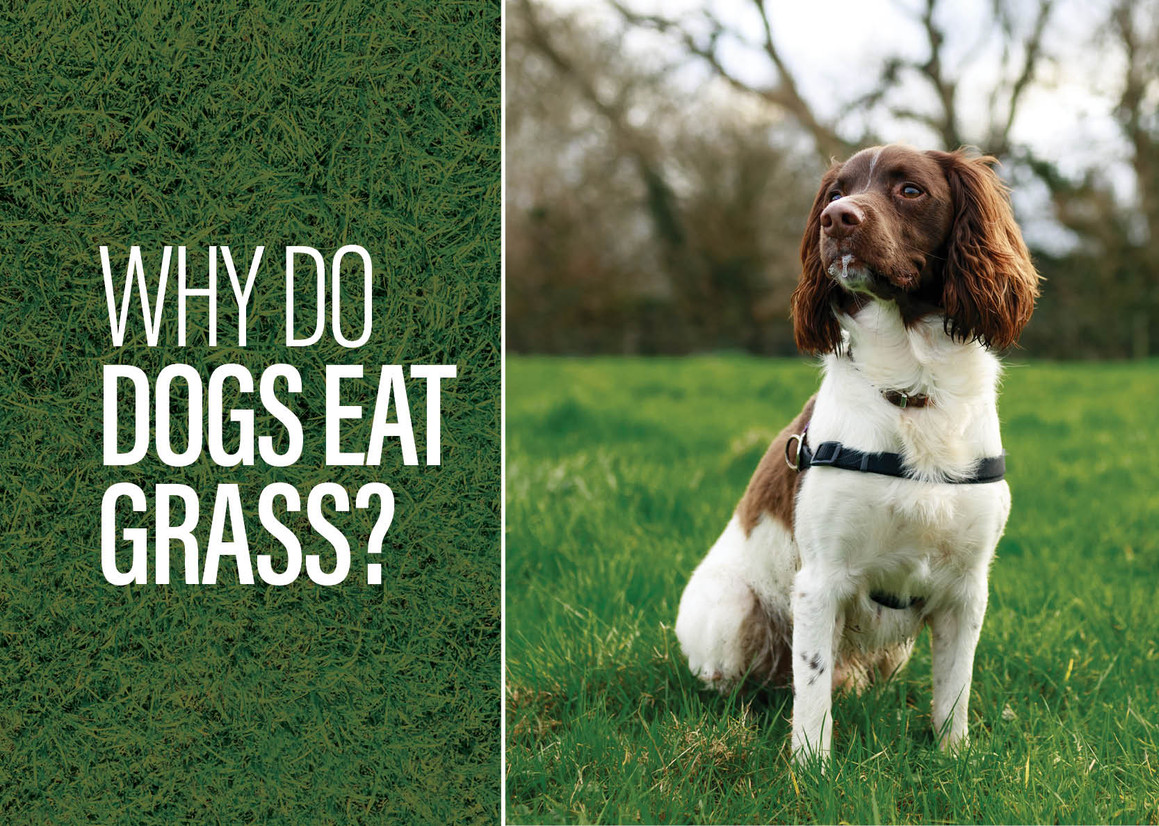Why Do Dogs Eat Grass?
Spring brings warmer temperatures, longer days, and lots of outdoor activities to enjoy with our dogs! You might also notice that when spring arrives, your dog becomes very interested in things like fresh young grass, rotten leaves, thawing poops and even wet soil!
Have you ever thought, “Ah! It smells like spring today!”? Well, spring does have a smell! In fact, spring is the smell of young and new grass sprouts, wet rotten leaves under the melting snow, and new buds on the trees. Imagine, if we find this smell appealing, how much more amplified it is for our dogs! Dogs are very good at seeking out smells; and, unfortunately, they don’t need to be good ones either! We all know dogs who will sniff, eat, and roll in the most disgusting things!
According to an old wives’ tales, dogs eat grass because they lack nutrients in their diet. This is false, and is, in fact, much simpler than that. Dogs eat grass because it smells and tastes good. Fresh grass has a pungent aroma and a sweet taste. At Big Country Raw, we are often asked, “where does this myth come from?” This myth is based on the nature of some herbivores to seek metallic and salty tastes when lacking minerals. This is an evolutionary adaptation that does not apply to all species and is strictly related to metals and salts. For example, cattle are a species that can identify when they lack minerals. In dairy and cattle nutrition, cows are given free access to salt and mineral blocks so they can lick the minerals and salts as needed. This also helps nutritionists determine if minerals are properly balanced in the cows’ diet.
As stated previously, this ability doesn’t apply to all animals and is very specific to salt and minerals versus taste. Dogs do not have a nutrient detection system within their body that pushes them to eat grass when they are lacking. Pica is a condition identifiable by an obvious symptom: dogs eating and licking non-food items. This issue is most commonly behavioural, unless other nutrient deficiency symptoms are present such as weight loss, lethargy, excessive thirst, excessive drooling, etc.
Dogs sometimes eat rocks, soil, and other things just to get our attention, or use it as a way to express anxiety. Although dogs eat grass because of its taste, some dogs do eat grass to ease digestive issues: the extra fiber helps them vomit or produce better bowel movements.
If this is the case, you will be able to identify when the dog is eating grass: after a particular protein, or at a moment of the day, etc. During winter, dogs engaging in this behaviour can also be seen licking excessively or eating fur and dirt. In this case there is likely something in their diet creating digestive discomfort and they are trying their best to resolve it on their own.
Did you know that you can plant specific herbs in your garden to help determine a potential underlying issue in your dog? Their grazing preferences can shed light on health issues or provide a great opportunity to supplement their habit with healthy grass instead of random sprouts! Here is a list of suggestions:
– Milk Thistle grass for liver support
– Wheat grass and barley grass for vitamins and minerals
– Marshmallow to soothe the gut
– Horsetail for kidney support
– Peppermint for fresh breath and digestion
Don’t forget to regularly cut the grass to keep as much new growth as possible. If the plants become mature, your dog likely won’t eat it: dogs love young, fresh grass. It is also important not to let your dog eat too much of what they find under the snow during spring. This is often the season of digestive issues because of this habit, and it may be best to stop your dog from excessively eating soil, grass and other animal poop. You can also supplement an immune support and probiotic protocol to help prevent any potential problems. Thrive Bovine Colostrum and Thrive Pro-Gut are two great supplements to add to your daily routine during spring!
Recent Posts
-
Holiday Wellness Tips: A stress-free season for you and your pet
The holiday season is full of sparkle, excitement, and delicious food, but it can also disrupt your
-
Feeding Your Senior Pet: Supporting them in their Golden Years
Most raw feeding conversations revolve around transitioning puppies or adult dogs. Once the switch i
-
Catober Spotlight: Feline Favourites for a Healthier, Happier Cat
October isn’t just about pumpkin spice and cozy sweaters - it’s also the perfect time to celebrate o





